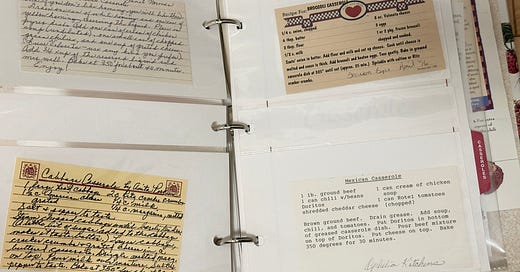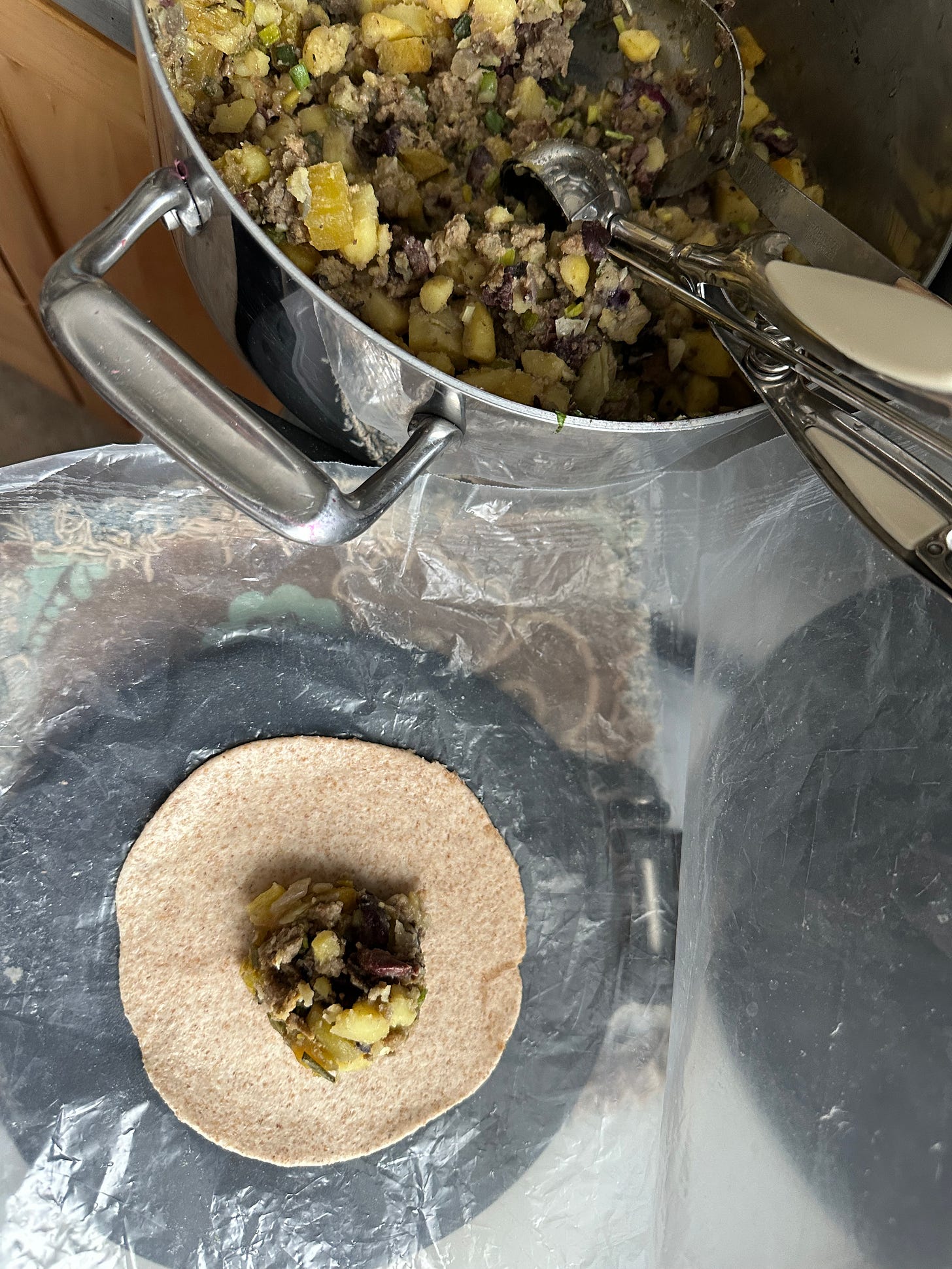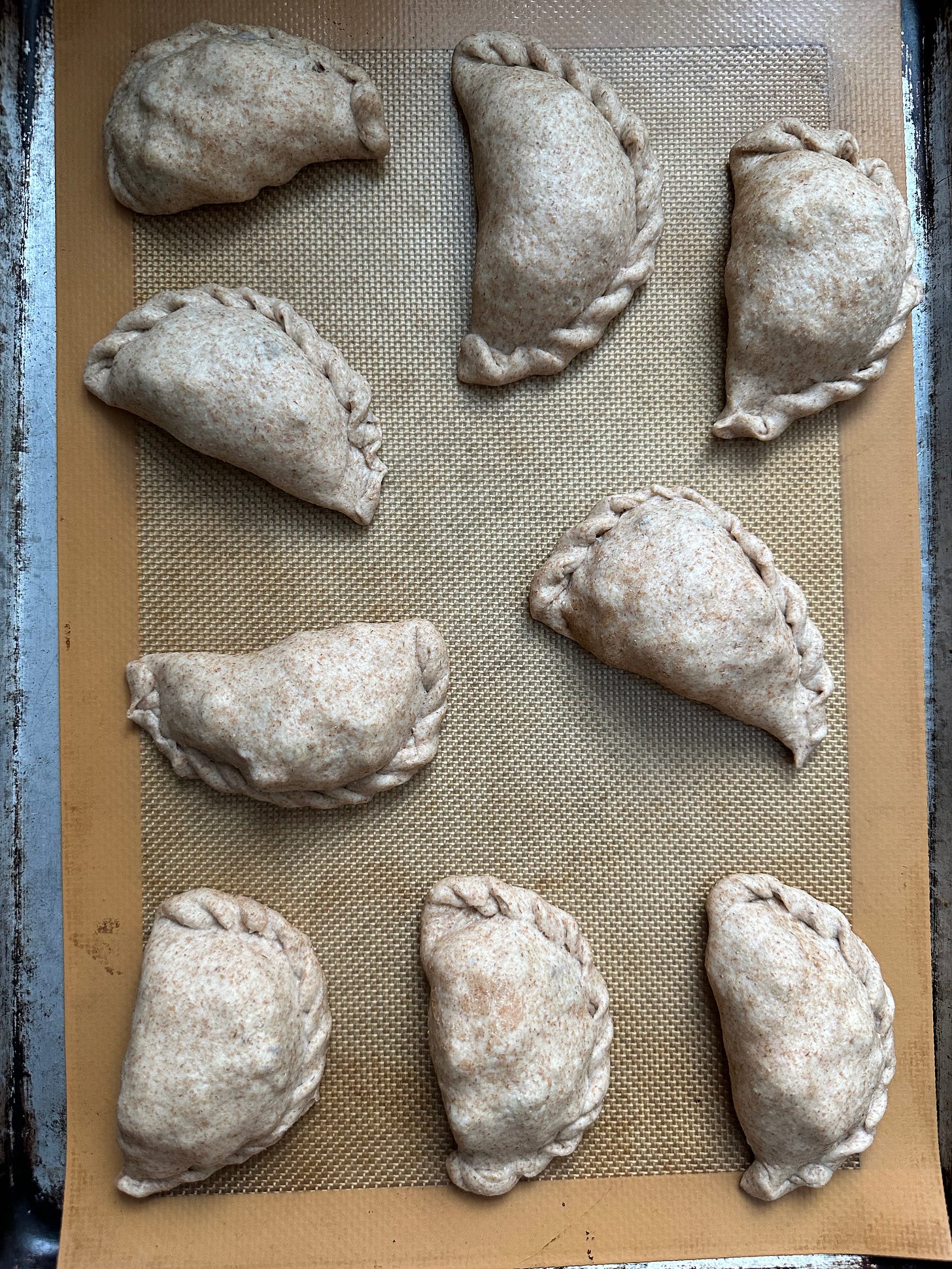Before I learned to ferment and can, I learned some practical skills of cooking extras. These were “Gifts to my future self,” to borrow from a phrase I have heard my kids say.
I picked up the habit by watching the women in my life. Some call these food tricks preserving the seasons, meal prep, or they don’t name it — they’re just figuring out how to feed a family three times a day.
For me, this has become a ritual. Every weekend I have a standing date with my fridge and pantry. We “talk” about what needs to be used, what each family member enjoys, and what can be packed into a 6 a.m. lunchbox for the week ahead.
I could just cook each night for the next day, but I find comfort in the rhythm of meal prepping. Knowing that meals are ready makes the days flow more smoothly. Often, I’ll have bread rising alongside my preparations. In winter, I make a couple of soups too.
My time in the kitchen is also play and exploration. I know not everyone feels this way or is able to. Today, as I was slicing cabbage for a salad and roasting food rescued root vegetables, I found myself wondering what to make. The wondering continued as I cooked, and I turned to the homemade recipe book I was given when I was married in 1996. Friends filled the pages with casseroles, recipes and stories.
Oh, I love the word casserole!
One-pot dishes are flexible & economical. A little bit of protein can flavor multiple meals.
I was looking at what I made: a mixture of potatoes, meats, golden beets, olives, rosemary, garlic and onions. Could this be a casserole? Should I mix in some rice or put in a dish and bake?
Instead, I decided to make empanadas. While on the topic, I looked up casserole history on The Food Timeline, a website I like to visit often. (Baker Dayna Evans wrote a terrific story about this, the work of librarian Lynne Olver, and how this rich digital archive was saved.) I am glad to make the connection that my beloved hand pies are related to casseroles!
“Medieval pies are also related, in that pastry was used as a receptacle for slowly cooking sweet and savory fillings. Early 18th century casserole recipes [the word entered the English language in 1708] typically employed rice which was pounded and pressed (similar to the pastry used for pies) to encase fillings.”— from The Food Timeline.
Empanadas
For the dough, mix together:
2 tbsp sourdough starter — I used one that was unfed from the fridge. This will still ferment and work well. If you don’t have sourdough starter you can use milk kefir, or you can use ¼ to ½ tsp of dry yeast for a slower ferment.
1/2 cup water
1/4 cup fat
2 cups whole grain wheat flour
1/4 to 1/2 teaspoon salt
Knead the dough well for several minutes. Let it ferment, covered, at room temperature for 6-8 hrs.
Roll out circles to 1/8 inch thick. I use a tortilla press.
Fill with vegetables, including boiled eggs and beans for extra protein if desired.
Fold in half & crimp with a fork, or fold and press the edges together to close.
If desired, brush with an egg, milk or kefir.
Bake 400 F for 20- 25 minutes.






